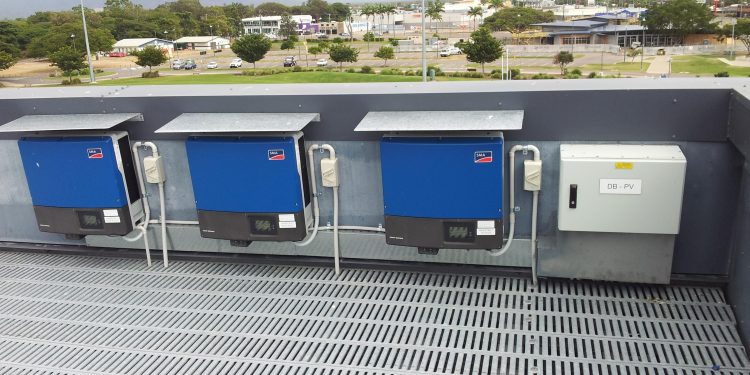In a world increasingly powered by the sun, the debate over whether commercial solar energy should be buoyed by public funds glows with complexity and intrigue. As the golden rays of sustainability illuminate rooftops and fields, the question arises: should taxpayers play a role in this bright transformation? This article delves into the multifaceted discussion surrounding the subsidization of commercial solar power, exploring the benefits, challenges, and ethical considerations that accompany this green revolution. With the future of energy at a pivotal crossroads, we examine the role of public funding in shaping a sustainable tomorrow, balancing innovation with fiscal responsibility. Join us as we shed light on this pressing issue, navigating the solar spectrum from economic impacts to environmental imperatives.
Evaluating Economic Impacts of Subsidizing Commercial Solar
Subsidizing commercial solar installations with public funds can significantly influence the economic landscape. On one hand, these subsidies can catalyze growth within the renewable energy sector, fostering job creation and innovation. As businesses transition to solar power, they often experience reduced operational costs, which can lead to increased competitiveness and expansion opportunities. Additionally, the proliferation of solar energy can contribute to energy independence and price stability in the long term, shielding the economy from volatile fossil fuel markets.
However, critics argue that public funds might be better allocated elsewhere, especially if the subsidies primarily benefit large corporations rather than small businesses or local communities. Potential economic drawbacks include:
- Budget reallocation from other critical areas such as education or healthcare.
- Market distortion, where subsidies could potentially discourage innovation by creating dependency.
- Equity concerns, as the benefits may not be evenly distributed across different socio-economic groups.
Ultimately, the decision to subsidize should carefully weigh these economic impacts to ensure that public funds are utilized in a manner that aligns with broader societal goals.

Environmental Benefits and Public Interest in Solar Investments
Investing in solar energy offers a plethora of environmental advantages that are increasingly capturing public interest. Among the most compelling benefits is the significant reduction in carbon emissions, which directly contributes to mitigating climate change. Solar power is a renewable resource, meaning it harnesses energy from the sun—a source that is abundant and inexhaustible. This reduces reliance on fossil fuels, leading to a cleaner, healthier environment. Furthermore, solar installations can also help decrease water usage associated with traditional power generation, which often relies heavily on water for cooling purposes.
The public’s interest in solar investments is not solely rooted in environmental concerns. There is a growing recognition of the potential economic and social benefits that these investments can yield. Some of these include:
- Creation of new jobs in solar panel manufacturing, installation, and maintenance.
- Potential reductions in energy costs over time, offering economic relief to communities.
- Enhanced energy independence and security, reducing vulnerability to global energy market fluctuations.
These factors contribute to a compelling argument for the allocation of public funds towards subsidizing commercial solar projects, promoting both environmental stewardship and economic resilience.

Balancing Public Funds: Cost-Benefit Analysis of Solar Subsidies
When considering the allocation of public funds, it is essential to weigh the long-term benefits of solar subsidies against their immediate costs. Solar energy not only helps in reducing carbon emissions but also stimulates job creation in the green energy sector. However, the challenge lies in assessing whether the economic advantages, such as lower energy costs and increased energy independence, justify the initial public investment. Some key considerations include:
- Environmental Impact: Reduced reliance on fossil fuels can lead to significant decreases in air pollution and greenhouse gas emissions.
- Economic Growth: Potential for new business opportunities and job creation in the renewable energy sector.
- Energy Security: Diversification of energy sources may protect against global market fluctuations.
- Initial Investment: The high upfront cost of solar installations can be a barrier without subsidies.
Balancing these factors requires a nuanced approach, ensuring that public funds are used efficiently to foster both economic resilience and environmental sustainability.

Policy Recommendations for Equitable Solar Subsidy Implementation
To ensure that public funds are used effectively and equitably in the subsidization of commercial solar energy, it is crucial to implement policies that address disparities and promote inclusivity. A well-rounded approach might include:
- Income-Based Support: Allocate subsidies based on the financial needs of businesses, providing greater assistance to smaller enterprises that may struggle with the initial investment in solar technology.
- Geographic Considerations: Focus on regions with less access to renewable energy resources or those that are disproportionately affected by environmental pollution, to help balance regional energy equity.
- Incentives for Sustainable Practices: Encourage businesses to not only install solar panels but also to adopt comprehensive sustainability practices by offering additional incentives for those that meet or exceed specific environmental standards.
- Community Engagement: Involve local communities in decision-making processes to ensure that the implementation of solar subsidies aligns with local needs and priorities, fostering a sense of ownership and responsibility.
By incorporating these strategies, policymakers can create a subsidy framework that not only promotes the adoption of solar energy but also advances social equity and environmental justice.
To Wrap It Up
As the sun dips below the horizon, casting its final golden glow across the landscape, the question of whether commercial solar should be subsidized by public funds remains a focal point of discussion. Like the myriad colors of a sunset, the arguments are varied and complex, reflecting a spectrum of perspectives that illuminate both the potential benefits and challenges of such a policy.
On one hand, the promise of a greener future and the potential for economic growth stand as compelling reasons to support public investment in commercial solar energy. On the other, the concerns over financial allocation and market dynamics urge caution and further scrutiny.
the path forward may not be a clear, singular ray of light but rather a constellation of ideas that guide us toward a sustainable tomorrow. As we continue to explore this critical issue, the dialogue remains open, inviting voices from all walks of life to contribute to a solution that balances innovation with responsibility. Just as the sun reliably rises each day, so too does the opportunity to reimagine our approach to energy, driven by both aspiration and prudence.
As we stand at this crossroads, the choice is ours to shape a future that harmonizes the needs of today with the hopes of tomorrow.

































